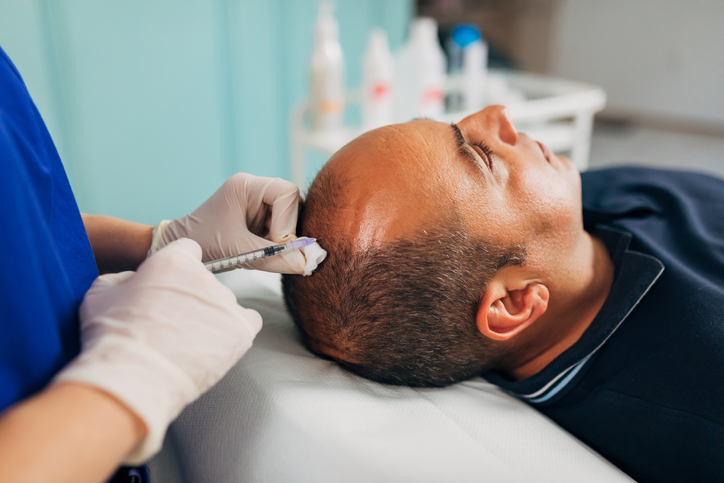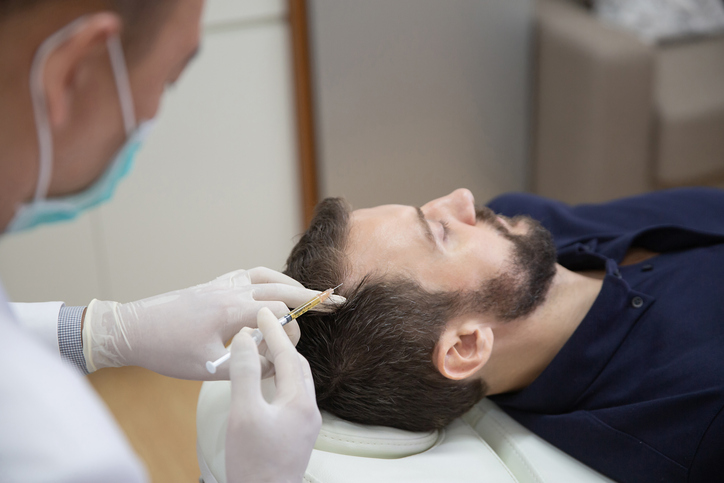Experiencing hair loss can be emotionally challenging, impacting both confidence and overall quality of life. As a result, many individuals turn to hair transplant procedures as a solution to restore their hair. However, it’s essential to approach these procedures with realistic expectations and a clear understanding of what they can accomplish. Let’s delve into key considerations for managing expectations before and after a hair transplant procedure.
Consultation and Assessment:
Initiating the process of expectation management begins with a comprehensive consultation with a certified hair restoration specialist. Through this consultation, the specialist will meticulously evaluate your hair loss pattern, assess the viability of your donor hair, and engage in a dialogue regarding your objectives and anticipations. They will offer a candid appraisal of the feasible outcomes of a hair transplant procedure tailored to your unique situation.
Hair Loss Stage:
The extent of your hair loss stage is pivotal in expectation management. Typically, individuals experiencing early stages of hair loss, characterized by minimal thinning and a clearly defined hairline, are more likely to achieve favourable results with hair transplant procedures. Conversely, for those grappling with advanced hair loss or substantial bald patches, attaining equivalent density and coverage may pose greater challenges. Acquiring a clear understanding of your particular stage of hair loss facilitates the establishment of realistic expectations.
Transplant Techniques:
Various hair transplant techniques, such as Follicular Unit Extraction (FUE) and Follicular Unit Transplantation (FUT), yield different results and have distinct limitations. FUE entails the extraction of individual hair follicles, whereas FUT involves removing a strip of tissue containing hair follicles. The selection of a technique hinges on several factors, including the degree of hair loss and the quality of the donor area. Engaging in a detailed conversation with your male hair transplant specialist about the advantages and disadvantages of each technique is imperative for aligning your expectations appropriately.
Donor Hair Quality:
The efficacy of a hair transplant significantly hinges on the quality and quantity of the donor hair available. Usually sourced from the back or sides of the scalp, these areas typically feature hair that is genetically resistant to balding. Should you possess thin or weak donor hair, it could potentially influence the overall success of the transplant. During your consultation, your specialist will evaluate the quality of your donor hair and offer insights into how it might impact the final outcome of the procedure.
Realistic Results:
Maintaining realistic expectations concerning the outcomes of a hair transplant procedure is essential. While the intervention can effectively replenish hair and yield a more youthful aesthetic, it’s crucial to recognise its limitations. A hair transplant cannot fabricate an artificial hairline or yield an unnaturally high density. The objective is to attain results that appear natural and harmonise with your existing hair. Recognising that the goal is enhancement rather than radical alteration can assist you in managing your expectations effectively.
Timeline of Results:
Understanding the timeline of results is another crucial aspect of managing expectations. A hair transplant is not an instantaneous solution; rather, it is a gradual process that unfolds over time. It takes time for the transplanted hair to grow and mature, and patience is key during this period.
Initially, it’s common for the transplanted hair to shed within the first few weeks after the procedure. This shedding is a natural part of the process and should not cause alarm. New hair growth typically begins around the third or fourth month post-transplantation. However, it may take up to a year to see the full results of a male hair transplant.
By understanding and accepting this timeline, individuals can avoid unnecessary disappointment and maintain realistic expectations throughout the recovery process.
Post-Operative Care:
The success of a hair transplant is not solely dependent on the procedure itself but also on the post-operative care you provide. Following the instructions given by your specialist is crucial for optimal results. This includes taking care of the transplanted hair and scalp, avoiding activities that could harm the grafts, adhering to the recommended hair care regimen, and attending all scheduled follow-up appointments. By following these guidelines diligently, you can significantly enhance the outcome of your hair transplant.
In summary, managing expectations is a crucial aspect of undergoing a hair transplant procedure. It’s essential to have a realistic understanding of what the procedure can accomplish and consider various factors such as the stage of your hair loss, the chosen transplant technique, the quality of your donor hair, and the expected timeline for results. Consulting with a qualified specialist at a reputable hair transplant clinic will help you gain clarity on the potential outcomes and address any concerns you may have. While a hair transplant can certainly improve the appearance of your hair and boost your confidence, it’s important to approach it with realistic expectations.





